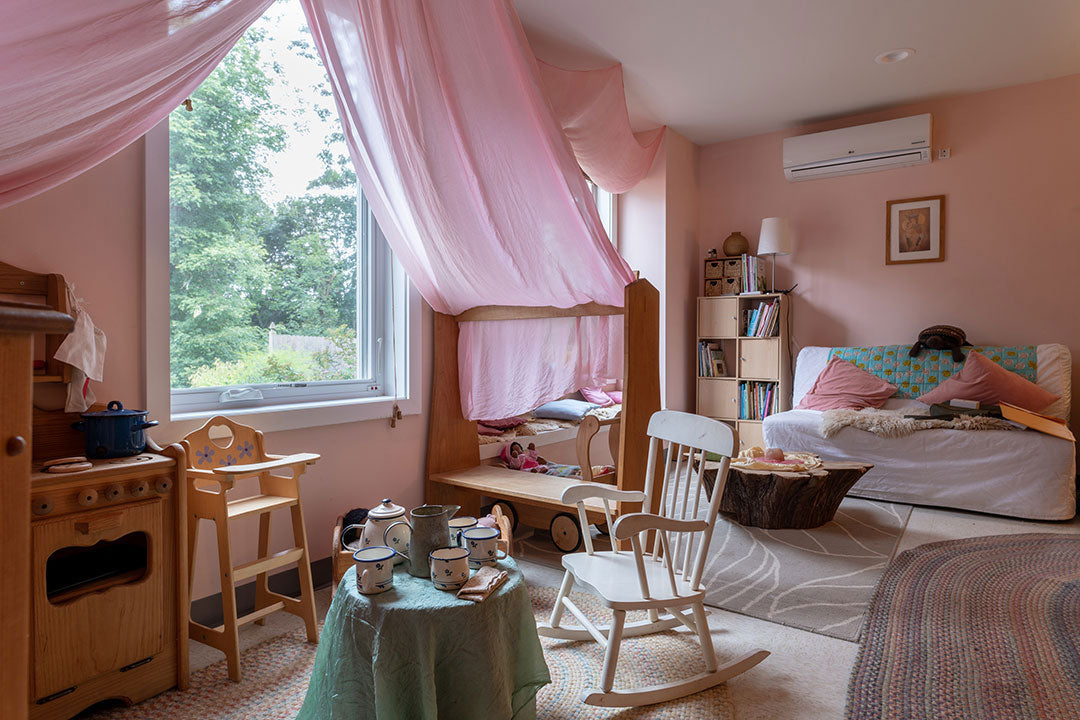Alternative methods of schooling, teaching and learning, truly prepare children to learn and grow and adapt to the world as it changes around them. Research has indicated that in the coming years, creativity and/or the creative mind is going to be valued above most other skills, and there will thus, be no doubt, that the schools that cultivate said creative minds, will be the one’s most in demand. Alternative schools, despite all their other differences, are united in that they incite in children a desire to want to be creative, allowing them the time, space and resources they need, to explore any and all of their varied interests. Reflection, metacognition, empathy and adaptability are some other skills that alternative educational schools tend to focus on.
What different alternative systems of schooling are there?
There are more kinds of alternative schooling being practised in the world than is possible to list in this article! Different people have started different schools and/or learning spaces that practise different degrees of alternative pedagogies. Here is a brief overview of some of the more prominent ones:
Waldorf:
Waldorf education, also known as Steiner education, is an alternative schooling system developed by Rudolf Steiner in the early 20th century. It emphasises a holistic approach to education, focusing on the intellectual, emotional, and spiritual development of the child. Waldorf schools often follow a consistent curriculum with an emphasis on arts, practical skills, and imaginative play. Teachers aim to nurture creativity, individuality, and a sense of community among students. The use of technology is limited, and learning is typically integrated with hands-on experiences, storytelling, and artistic activities.
Montessori:
Founded by Dr. Maria Montessori in the late 19th century, Montessori education emphasises self-directed learning and hands-on exploration. The learning environment is carefully designed to allow students to choose from a range of activities that align with their interests and developmental needs. Montessori classrooms are equipped with self-correcting materials, and teachers serve as guides to support the child's natural curiosity and growth. The method promotes independence, problem-solving skills, and respect for each child's unique learning pace and style.
Reggio Emilia:
The Reggio Emilia approach originated in Italy after World War II. It is characterised by its child-centred, project-based learning philosophy. In this approach, teachers act as collaborators and co-learners alongside the students, fostering an open and interactive learning environment. Children are encouraged to explore and express themselves through various mediums, such as art, drama, and language. The curriculum emerges from the interests and questions of the students, allowing for in-depth investigations and meaningful learning experiences.
J Krishnamurti:
Inspired by the teachings of philosopher Jiddu Krishnamurti, this educational approach emphasises self-awareness, critical thinking, and questioning the nature of the self and the world. The focus is on developing a deep understanding of oneself and the interconnectedness of all life. J Krishnamurti schools often encourage open dialogue, reflection, and a non-authoritarian relationship between teachers and students. The goal is to foster independent thinkers who are in tune with their emotions and surroundings.
Unschooling:
Unschooling is an education philosophy that challenges the traditional schooling system altogether. It promotes self-directed learning and believes that children learn best when they pursue their passions and interests without formal curriculum or schedules. Unschooling parents act as facilitators, providing resources and support as needed but allowing the child's curiosity and intrinsic motivation to guide their learning journey. This approach values real-life experiences and believes that learning is an organic process that occurs naturally throughout life.
Forest Schools:
Forest schools take education outside the traditional classroom and immerse students in nature. Originating in Scandinavia, this approach focuses on outdoor play, exploration, and hands-on learning in natural settings, such as forests, parks, and open spaces. Forest schools encourage children to engage with their surroundings, fostering a deep connection to nature, and promoting physical, emotional, and social development. The natural environment becomes a source of inspiration for creative play and learning experiences.
Democratic Schools:
Democratic schools are founded on the principles of self-governance and student-led decision-making. These schools provide students with the autonomy to choose their activities, classes, and projects. They have a say in the school's rules and policies through regular democratic meetings. Students are encouraged to explore their interests freely, and teachers act as mentors and facilitators rather than authoritative figures. The aim is to create engaged and responsible citizens who actively participate in shaping their educational experience and school community.
Finnish Education:
The Finnish education system has gained global recognition for its high-quality and equitable approach to education. It prioritises equal opportunities for all students and minimises competition between schools. Finnish schools emphasise play, creativity, and a holistic view of education, focusing on the overall well-being of the students. The curriculum is designed to be flexible, allowing teachers to adapt their teaching methods to meet the individual needs of students. There is also a strong emphasis on teacher training and professional development to maintain high teaching standards.
Each of these alternative education systems offers unique approaches to learning and development, catering to diverse learning styles and preferences. The emphasis on individuality, critical thinking, and self-directed learning sets them apart from traditional educational models, making them attractive options for parents and educators seeking alternative approaches to schooling.
What do different alternative school classrooms look like?

A Waldorf kindergarten classroom. Source

A Montessori Early Years Classroom. Source

A Reggio Emilia Kindergarten Classroom. Source

Assembly Hall at Paathshala School for Learners, a Krishnamurti Foundation School

One Forest School, Virginia. Source.

Craft Studio at Hudson Valley Sudbury School. Source - A Democratic School

A classroom in Saunalahti Finnish School. Source.
To what degree is technology used and taught in alternative schools?
Overall, the approach and use of technology in these alternative education systems tend to be more conservative compared to mainstream educational models. They prioritise the development of essential skills, creativity, and personal connections, with technology being seen as a supplementary tool rather than a primary means of instruction. The emphasis on hands-on experiences, social interaction, and real-world exploration remains at the core of these educational philosophies.
Waldorf:
Waldorf schools generally take a cautious approach to technology, limiting its use in the early years of education. The emphasis is on developing imagination, creativity, and practical skills through hands-on activities and artistic pursuits. Technology is often minimised or absent from classrooms to allow children to engage with the real world and develop their sensory experiences fully. As students grow older, technology may be introduced in a more limited and purposeful manner, with a focus on its ethical use and creative applications.
Montessori:
Similar to Waldorf schools, Montessori education typically adopts a conservative stance on technology during the early years. The focus is on cultivating the child's natural curiosity and independence through physical and sensory experiences. Montessori classrooms are usually equipped with traditional learning materials rather than electronic devices. As children progress through the program, technology may be gradually introduced, but it is expected to be used thoughtfully and purposefully to support the child's exploration and research.
Reggio Emilia:
The Reggio Emilia approach is known for its emphasis on hands-on, experiential learning, and the use of technology is generally limited in the early childhood years. The primary focus is on children's interactions with the physical environment, materials, and peers. However, as students engage in project-based learning and investigations, technology may be incorporated selectively to document and present their findings, such as through photography, videos, or simple digital tools.
J Krishnamurti:
J Krishnamurti schools typically take a cautious stance towards technology, emphasising self-awareness and critical thinking over digital distractions. The focus is on understanding the nature of the mind and consciousness, which may be hindered by excessive use of technology. Technology is likely to be used sparingly, if at all, and the emphasis is on in-person discussions, contemplation, and observation of the natural world.
Unschooling:
Unschooling families vary widely in their approach to technology. Some may adopt a more limited use of technology to allow for more hands-on experiences and exploration of real-world activities. Others may embrace technology as a valuable tool for self-directed learning, accessing information, and connecting with like-minded communities. The use of technology in unschooling largely depends on the family's values, the child's interests, and the resources available.
Forest Schools:
Forest schools typically have a minimal or no reliance on technology. The focus is on immersing children in the natural environment to foster a deep connection with nature and promote physical and emotional well-being. Technology is generally viewed as a distraction from the outdoor experience and is, therefore, not integrated into the daily activities of forest school programs.
Democratic Schools:
In democratic schools, the use of technology varies depending on the school's philosophy and the preferences of the students and staff. Some democratic schools may incorporate technology as a tool for research, communication, and creative expression. However, the emphasis is usually on maintaining a balanced approach to technology use, ensuring that it enhances, rather than replaces, face-to-face interactions and real-world experiences.
Finnish Education:
The Finnish education system employs technology more widely compared to some of the other alternative education systems. However, even in Finland, the approach to technology in schools is thoughtful and purposeful. Technology is used as a supplementary tool to enhance learning and teaching practices rather than replacing traditional methods. Finnish educators focus on ensuring that technology integration aligns with educational goals, and it is often employed in a way that promotes collaboration, critical thinking, and problem-solving skills.




1 comment
This is a beautiful comparison of the different types of schools, thanks you for writing this!
Leave a comment